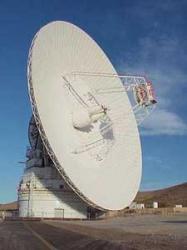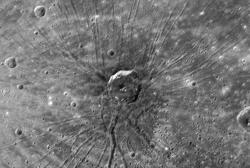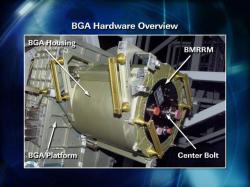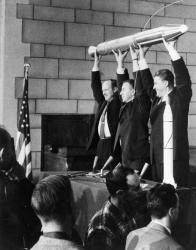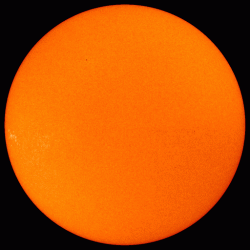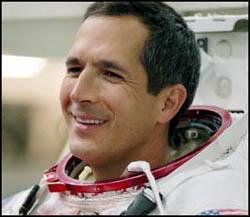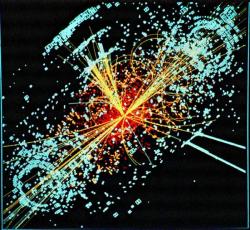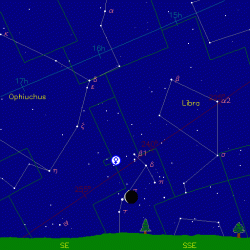Press conferences, exhibitions, launches, political rendezvous and much more ... the list of the main communication activities that ESA will be involved in this year is a long one, but not an exhaustive one. You should pencil these dates into your diaries.
January
14
ESA’s Director General, Jean-Jacques Dordain, meets the press at ESA Headquarters in Paris, France to give a status report on ongoing activities and an overview of upcoming events.
17
Opening of the new Santa Maria Tracking Station to follow Ariane 5 launches, Azores Islands, Portugal.
18
Contract signing for ESA’s Mercury mission, BepiColombo, at EADS Astrium, Friedrichshafen, Germany.
2nd half
STS-120/Esperia Post-Flight Tour by ESA astronaut Paolo Nespoli. Tour of various sites in Italy.
tbd
Space shuttle mission STS-122/Columbus. With ESA astronauts Leopold Eyharts and Hans Schlegel on board.
February
5 - 6
Future Launcher Preparatory Programme workshop at ESA/ESTEC research and technology centre, Noordwijk, Netherlands.
7
Inauguration of the European Space Astronomy Centre (ESA/ESAC) near Madrid, Spain.
12
Kick-off of the “International Year of Planet Earth” at ESA Headquarters and UNESCO Headquarters, Paris.
2nd half
Launch of ESA’s first Automated Transfer Vehicle “Jules Verne” to the ISS onboard an Ariane 5, from CSG Kourou, French Guiana. Several local events will be organised at ESA sites across Europe.
tbd
A few days after launch, the “Jules Verne” docks with the International Space Station. Events at ATV Control Centre in Toulouse and at ESA HQ Paris and other ESA sites across Europe.
tbd
Zefiro 23 engine firing test for the future Vega launcher at “Salto di Quirra” test range, Sardinia, Italy.
tbd
GOCE Earth observation mission: media day at ESA/ESTEC research and technology centre, Noordwijk.
tbd
Workshop on satellite communication applications at ESA/ESTEC research and technology centre.
March
tbd
Opening of new ESA/ESTEC laboratory building at Noordwijk.
tbd
“Open Day” at ESA/ESRIN Earth observation centre in Frascati (Rome), Italy as part of Italian Science Week.
April
tbd
Launch of GIOVE-B satellite for the Galileo system onboard a Russian Soyuz, from Baikonur, Kazakhstan. Events in several ESA centres in Europe.
tbd
Start of ESA’s astronaut selection campaign.
tbd
Launch of Chandrayaan-1 lunar mission onboard an Indian PSLV (Polar Satellite Launch Vehicle), from Satish Dhawan Space Centre, India (by Indian Space Agency ISRO).
tbd
40th anniversary of ESA's ground station at Redu, Belgium.
May
14-16 (tbc)
GMES conference: “Briging the gap”, Portrose, Slovenia
15
Launch of ESA’s GOCE satellite (Earth gravity field) onboard a Rockot launcher, from Plesetsk, Russia.
tbd
40th anniversary of the Guiana Space Centre, Europe’s Spaceport (CSG), in Kourou, French Guiana.
tbd
Conference on the Global Monitoring for Environment and Security (GMES) programme, Prague, Czech Republic.
27 May - 1 June
ILA2008 international aerospace fair in Berlin, Germany. Joint ESA / DLR / BDLI pavilion in "International space village".
end
Post-flight tour for ESA astronauts Hans Schlegel (Germany) and Léopold Eyharts (France) in the context of ILA2008, Berlin.
July
31
Launch of ESA’s Herschel-Planck spacecraft onboard an Ariane 5, from CSG, Kourou. Launch coverage at several ESA establishments across Europe.
August
tbd
“ Night of Exploration” in Copenhagen, Denmark. ESA space show/public event, with space experts and scientists.
September
5
Steins Observation by ESA’s comet-chaser Rosetta. Event at ESA’s Operations Centre, ESOC / Darmstadt, Germany.
16-18
GMES conference “The operational phase”, Lille, France
29 Sept. - 3 Oct.
IAC - International Astronautical Congress - in Glasgow, UK.
30 (tbc)
5th ESA/EC joint Space Council in Brussels, Belgium.
tbd
"Ciencia Viva" space exhibition in Lisbon, Portugal.
October
tbd
Launch of ESA’s SMOS (Soil Moisture and Ocean Salinity) mission onboard a Rockot, from Plesetsk, Russia.
tbc
Launch of ESA’s Proba-2 microsatellite, together with SMOS, onboard a Rockot, from Plesetsk.
November
25 - 26
ESA Council meeting at ministerial level in The Hague, Netherlands.
December
tbd
Announcement of initial findings of Herschel-Planck mission.
tbd
Maiden flight of ESA’s new small launcher Vega, from CSG, Kourou.
tbd
Inauguration of "Looking for Life" exhibition at NEMO science centre, Amsterdam, Netherlands.
Dates of certain events, especially launches, depend on various factors, such as readiness of the spacecraft and/or launcher. In the calendar of activities, they remain tabled as 'to be determined' (tbd) or 'to be confirmed' (tbc). Definite dates are confirmed by Arianespace (for Ariane launches), Starsem (for Soyuz launches), Eurockot (for Rockot launches) and NASA (for Space Shuttle launches).
